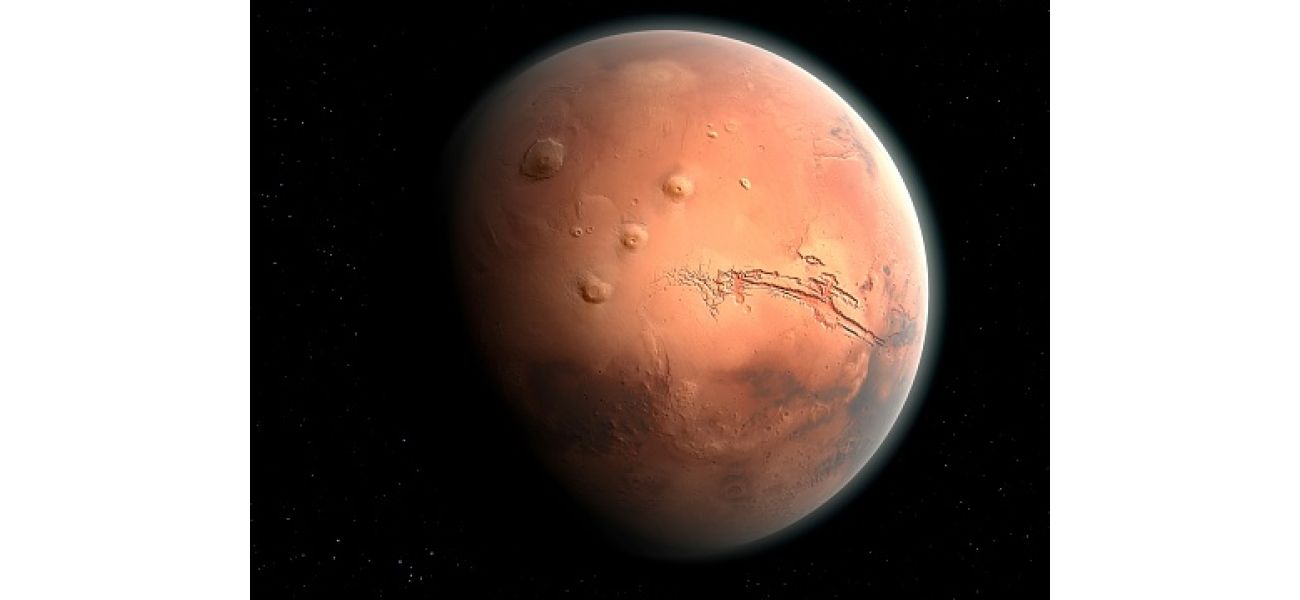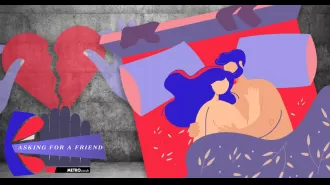NASA moves closer to sending people to Mars with major progress.
Who's up for it?
October 9th 2024.

NASA has a grand vision to one day use advanced technology to send messages to astronauts on their mission to Mars. And this dream is now one step closer to becoming a reality. In a groundbreaking achievement, the American space agency has successfully transmitted a laser signal over a distance of 290 million miles. This incredible feat could revolutionize the way we communicate with other forms of life beyond our own planet.
The milestone was achieved through the Deep Space Optical Communications technology demonstration, which has been exploring the possibility of using lasers for long-distance communication in space. It's been about a year since NASA sent a message 10 million miles into space, and the recent success of sending a message to the Psyche spacecraft, which is currently on its way to study an asteroid, is a major leap forward.
The message was transmitted at a distance of 290 million miles, which is equivalent to the distance between Earth and Mars when the two planets are at their farthest points from each other. Dr. Meera Srinivasan, the operations lead at NASA's Jet Propulsion Laboratory in Southern California, expressed the significance of this accomplishment. "Laser communication requires an extremely high level of precision, and before we launched with Psyche, we were uncertain about the performance degradation that would occur at such great distances," she said. "But now we have confirmed that our tracking and pointing techniques are effective, which is a huge step towards demonstrating that optical communications can truly transform the way we explore our solar system."
NASA has high hopes for this laser technology, not just for future crewed missions to Mars, but for other interplanetary explorations as well. The agency explains that by using lasers to transport data, we can achieve data transfer rates that are up to 100 times faster than traditional radio frequencies. This means that we can send complex scientific information, high-definition imagery, and even video, which will be crucial in supporting astronauts during long-distance space travel.
To achieve this feat, the data is sent to and from the Psyche spacecraft in the form of bits encoded in near-infrared light. This type of light has a higher frequency than radio waves, allowing us to pack more data into each transmission. And this is why the ultra high-definition video of a cat chasing a red laser light, aptly named Taters, was able to reach Earth from a distance of 9 million miles in just under two minutes.
However, as the distance between Earth and the spacecraft increases, the speed of the connection decreases. When Psyche was 33 miles away, the maximum data transfer rate was 267 megabits per second. But as it traveled further, the maximum rate dropped to 8.3 megabits per second. This shows that there are still challenges to overcome, but NASA is confident that with further advancements, laser communication can become a reliable and efficient way to explore our solar system.
The success of this laser communication technology has opened a whole new realm of possibilities for space exploration. And as we continue to push the boundaries of what is possible, who knows what other incredible discoveries and achievements await us in the vastness of space.
The milestone was achieved through the Deep Space Optical Communications technology demonstration, which has been exploring the possibility of using lasers for long-distance communication in space. It's been about a year since NASA sent a message 10 million miles into space, and the recent success of sending a message to the Psyche spacecraft, which is currently on its way to study an asteroid, is a major leap forward.
The message was transmitted at a distance of 290 million miles, which is equivalent to the distance between Earth and Mars when the two planets are at their farthest points from each other. Dr. Meera Srinivasan, the operations lead at NASA's Jet Propulsion Laboratory in Southern California, expressed the significance of this accomplishment. "Laser communication requires an extremely high level of precision, and before we launched with Psyche, we were uncertain about the performance degradation that would occur at such great distances," she said. "But now we have confirmed that our tracking and pointing techniques are effective, which is a huge step towards demonstrating that optical communications can truly transform the way we explore our solar system."
NASA has high hopes for this laser technology, not just for future crewed missions to Mars, but for other interplanetary explorations as well. The agency explains that by using lasers to transport data, we can achieve data transfer rates that are up to 100 times faster than traditional radio frequencies. This means that we can send complex scientific information, high-definition imagery, and even video, which will be crucial in supporting astronauts during long-distance space travel.
To achieve this feat, the data is sent to and from the Psyche spacecraft in the form of bits encoded in near-infrared light. This type of light has a higher frequency than radio waves, allowing us to pack more data into each transmission. And this is why the ultra high-definition video of a cat chasing a red laser light, aptly named Taters, was able to reach Earth from a distance of 9 million miles in just under two minutes.
However, as the distance between Earth and the spacecraft increases, the speed of the connection decreases. When Psyche was 33 miles away, the maximum data transfer rate was 267 megabits per second. But as it traveled further, the maximum rate dropped to 8.3 megabits per second. This shows that there are still challenges to overcome, but NASA is confident that with further advancements, laser communication can become a reliable and efficient way to explore our solar system.
The success of this laser communication technology has opened a whole new realm of possibilities for space exploration. And as we continue to push the boundaries of what is possible, who knows what other incredible discoveries and achievements await us in the vastness of space.
[This article has been trending online recently and has been generated with AI. Your feed is customized.]
[Generative AI is experimental.]
0
0
Submit Comment





